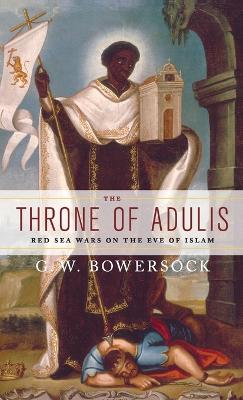Emblems of Antiquity
1 total work
Just prior to the rise of Islam, in the sixth century AD, southern Arabia was embroiled in a holy war between Christian Ethiopians and Jewish Arabs. The Jewish kingdom, composed of ethnic Arabs who had converted to Judaism more than a century before, had launched a bloody pogrom against Christians in the region. The ruler of Ethiopia, who claimed descent from the union of Solomon and the Queen of Sheba and even was rumored to possess an object no less venerable than
the Ark of the Covenant, aspired both to protect the persecuted Christians and to restore Ethiopian control in the Arabian Peninsula. Though little known today, this was an international war that involved both the Byzantine Empire, who had established Christian churches in Ethiopia beginning in the
fourth century, and the Sasanian Empire in Persia, who supported the Jews in a proxy war with Byzantium.
Our knowledge of these events derives mostly from an inscribed throne at the Ethiopian port of Adulis seen and meticulously described by a Christian merchant known as Cosmos in the sixth century. Trying to decipher and understand this monument takes us directly into religious conflicts that occupied the nations on both sides of the Red Sea in late antiquity. Using the writings of Cosmas and archaeological evidence from the period, historian G. W. Bowersock offers a narrative account of this
fascinating but overlooked chapter in pre-Islamic Arabian history. The extraordinary story told in Throne of Adulis provides an important and much neglected background for the rise of Islam as well as the collapse of the Persian Empire before the Byzantines.
the Ark of the Covenant, aspired both to protect the persecuted Christians and to restore Ethiopian control in the Arabian Peninsula. Though little known today, this was an international war that involved both the Byzantine Empire, who had established Christian churches in Ethiopia beginning in the
fourth century, and the Sasanian Empire in Persia, who supported the Jews in a proxy war with Byzantium.
Our knowledge of these events derives mostly from an inscribed throne at the Ethiopian port of Adulis seen and meticulously described by a Christian merchant known as Cosmos in the sixth century. Trying to decipher and understand this monument takes us directly into religious conflicts that occupied the nations on both sides of the Red Sea in late antiquity. Using the writings of Cosmas and archaeological evidence from the period, historian G. W. Bowersock offers a narrative account of this
fascinating but overlooked chapter in pre-Islamic Arabian history. The extraordinary story told in Throne of Adulis provides an important and much neglected background for the rise of Islam as well as the collapse of the Persian Empire before the Byzantines.
